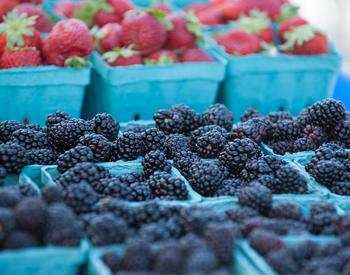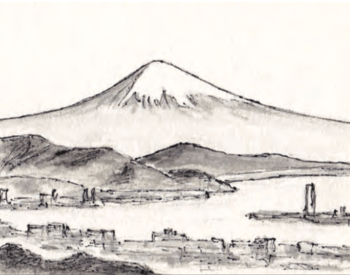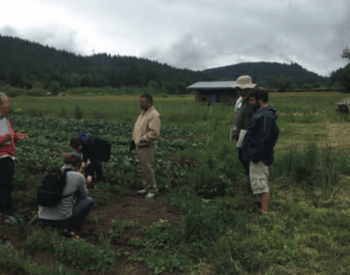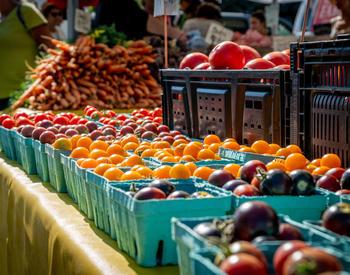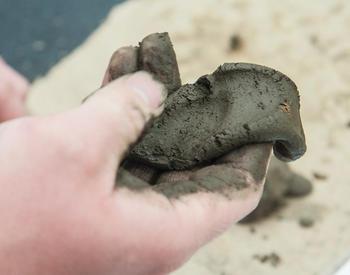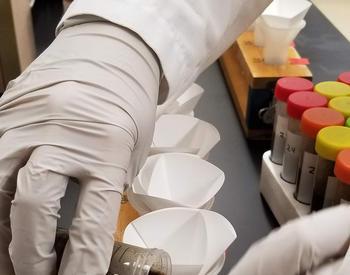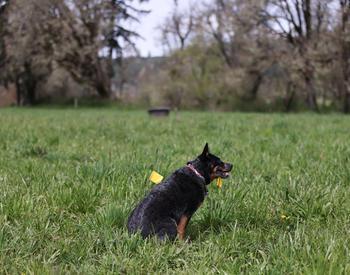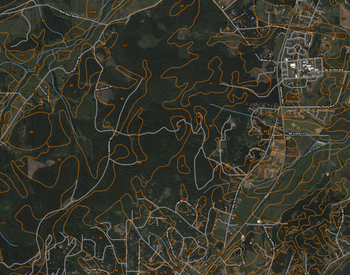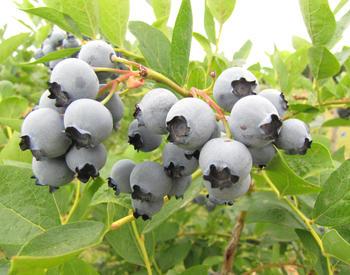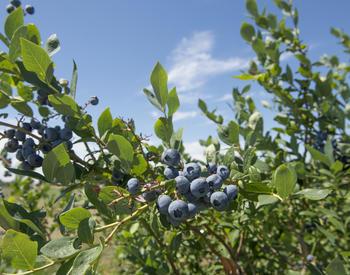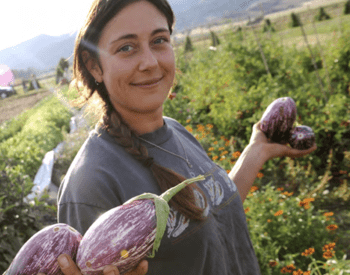Compost analysis
If you're composting blueberry plants, it's essential to get an accurate chemical and physical analysis of the amendment.
Selecting the right laboratory to analyze your compost is an important first step. It’s usually best to use a lab that specializes in compost analysis. Compost testing labs typically offer several analysis packages that are appropriate for different compost uses. When choosing a lab, ask for a copy of their report form. By looking it over, you can see if the results are presented in a manner that you can understand, and in units you can relate to. You will also want to find out how much your desired analysis will cost, how the lab wants the sample handled and delivered, and on what day the sample should be shipped. Samples that require immediate attention by the lab should be shipped early in the work week.
Not many agricultural testing labs specialize in compost testing. You can find labs that specialize in compost testing at the Compost Analysis Proficiency Program, sponsored by U.S. Composting Council. Labs participate voluntarily in this program to improve testing accuracy and precision. These labs use reproducible methods published in a peer-reviewed manual. Only a few labs participate in CAP in the West. Because compost testing is an art, using a testing lab that participates in CAP is recommended. Lab representatives should be able to show you a proficiency testing report from CAP that reviews the lab's analytical performance.
When you order compost from a vendor, a compost analytical report is sometimes provided. However, it's often unclear whether the analysis provided reflects current compost quality or if the lab conducted tests appropriately. A compost analysis from an independent, reputable analytical laboratory will provide you the most reliable information. A routine compost analysis usually includes analyses of:
- General physical and chemical properties.
- Organic matter, or carbon.
- Macro- and micronutrients.
| Analysis | Units | Sawdust | Compost |
|---|---|---|---|
| Total N | % | 0.1 | 1.1 |
| Organic C | % | 49 | 26 |
| Organic matter | % | 99 | 50 |
| Ash | % | 1 | 50 |
| C:N | ratio | 494 | 24 |
| NH4-N | ppm | 15 | 12 |
| NO3-N | ppm | 2 | 41 |
| EC (1:5 method) | dS/m | 0.3 | 1.4 |
| pH (1:5 method) | 4.5 | 7.4 | |
| Total P | % | 0.02 | 0.21 |
| Totak K | % | 0.1 | 0.6 |
| Total Ca | % | 0.2 | 0.9 |
| Total Mg | % | <0.1 | 0.3 |
| SO4-S | ppm | 30 | 7 |
| Total Cu | ppm | 5 | 57 |
| Total Zn | ppm | 11 | 167 |
| Total Mn | ppm | 86 | 585 |
| Total B | ppm | 11 | 15 |
Average of compost and sawdust samples collected in 2006 and 2010. Compost analyses using protocols described in Test Methods for Compost and Composting. Total nutrients determined via strong acid digestion and ICP determination. Percent and ppm units are w/w. 1 ppm = 1 mg/kg; 1% = 10 g/kg.
General physical and chemical properties:
- Compost moisture or water content is expressed as a percentage of compost wet weight. Compost with 40% moisture contains 60% dry matter. Composts with high moisture (above 60%) are usually clumpy and difficult to spread. Composts with low moisture (less than 40%) are dusty. The higher the moisture content, the lower the amount of organic matter you get per ton of fresh compost.
- Bulk density. This measurement is expressed in pounds per cubic yard. Laboratories can perform a bulk density test, or you can perform it in the field. An estimate of compost bulk density is needed to convert compost nutrient content from your lab report (expressed on a fresh weight basis) to a volume basis (for compost application in the field). Screened composts containing 50% moisture typically have a bulk density of about 1,000 lb per cubic yard. In the field, bulk density can be estimated by packing a bucket of known size with compost, then measuring the compost weight.
- Electrical conductivity, or EC, is an indicator of soluble salt content. It is usually reported in units of memos/cm, mS/cm, or dS/m. All of these units are equal numerically and have the same interpretation. High salt levels may injure blueberry. The interpretation of compost EC measurements varies depending on the method used. Because compost absorbs water, most compost-testing labs measure pH using a 1:5 compos-to-water method. Other labs may use a saturated media extract method or a 1:10 compost-to-water method. The more water added to the compost sample, the lower the measured EC will be.
- Compost pH. Most composts have slightly acidic to alkaline pH (6-8.5). The high pH of most manure-based composts (e.g., chicken and dairy) is unsuitable for acid-loving plants like blueberry. Compost pH values are not affected by pH measurement method (amount of water added to the sample before pH is determined). The same compost pH is typically reported when a compost EC is determined by saturated media extract (SME), 1:5 or 1:10 compost-to-water methods.
Organic matter and nitrogen
-
Total carbon or organic matter is expressed as a percentage of the dry weight of compost. Typical values for compost are 40-60% organic matter, and the remaining material is ash (inorganic). Carbon comprises about half of the organic matter weight (total C multiplied by 2 equals organic matter). Compost with 50% organic matter contains about 25% C.
The most valuable component of compost for blueberry is typically organic matter. You can compare the amount of organic matter supplied per cubic yard of compost-based on measurements of compost organic matter, moisture and bulk density. Typical composts contain about 50% organic matter (dry weight) basis, about 50% moisture, and weigh 1,000 lb per cubic yard (fresh, "as-is" compost). So, a cubic yard of compost typically supplies about 250 lb of organic matter.
Composts that are low in organic matter are usually not a good value. Often, low organic matter values in compost are the result of mixing of soil or sand into the compost. This usually occurs when compost is prepared on bare ground, and the soil or sand is incorporated when the compost pile is turned. Composts that contain high levels of organic matter may not have been thoroughly composted, and may contain a lot of unstable organic matter that will be lost (as carbon dioxide gas) via rapid decomposition after field application.
-
Total nitrogen is comprised of organically bound N (not immediately plant-available) plus inorganic N (ammonium-N plus nitrate-N). Usually, over 90% of total N in compost is in organic form. Compost organic N is estimated as total N minus inorganic N.
-
The carbon-to-nitrogen ratio (C:N) is the ratio of total carbon to total nitrogen. Well- composted materials reach a stable C:N ratio of 12 to 15, similar to the C:N ratio found in soil organic matter. Woody composts typically have higher C:N (above 20). As a comparison, Douglas-fir sawdust typically has a C:N ratio above 400.
-
Inorganic N, sometimes called “plant-available N” is composed of soluble ions (ammonium and nitrate), and is reported as ammonium-N (NH4-N) and nitrate-N (NO3-N). Ammonium-N and nitrate-N are released from decomposition of organic nitrogen. In most composts, inorganic N comprises less than 10% of compost total N, with the remainder of total N in organic form. Finished composts usually contain more nitrate-N than ammonium-N.
The short-term N fertilizer replacement value of compost can be estimated using its inorganic N content. The organic N in compost decomposes slowly in soil after application, and can be ignored in estimating short term N fertilizer replacement value. A compost that contains 0.1% inorganic N (1000 ppm N) on a dry weight basis, contains 2 lb inorganic N per dry ton or about 0.5 lb inorganic N per cubic yard of compost (1000 lb/yd3 x 50% dry matter x 0.1% inorganic N).
- Phosphorus, potassium and micronutrients. Composts supply other nutrients that are important for plant nutrition, such as phosphorus (P), potassium (K), calcium (Ca), magnesium (Mg), sodium (Na), sulfur (S), and micronutrients. Total nutrient analysis is commonly used to evaluate compost for field application. The sample is first digested in a strong acid and then measured for nutrients by ICP. This is the same methodology used to determine total nutrients in a plant tissue sample.
Other tests can sometimes be helpful in determining the utility of compost for blueberry:
- Particle size is determined by sieving. Larger particle size is required when using compost as a mulch. Composts with finer particles are suitable for soil incorporation. As a general rule, most composts contain particles that are too small for successful use as mulch.
- Stability is the resistance of compost to further biological decomposition. Stability is usually determined by measuring carbon dioxide loss during the incubation of a compost sample. Very unstable composts contain organic acids and/or ammonia that can kill or injure plants. Composts that are stable are slowly decomposed in the soil and can make long-term contributions to enhancing soil organic matter.
- Calcium carbonate equivalent (CCE) is the amount of inorganic lime present in compost. Lime increases pH (makes soil alkaline). The more lime present, the less suitable the compost is for blueberry. This test does not give an accurate measurement of the amount of S that would be required to acidify a compost. It will identify composts that are unsuitable for blueberry because of lime addition at the composting facility.
- Microbial testing. Several labs offer analyses designed to evaluate compost biology such as counts of fungi, bacteria, actinomycetes, and other microbial indicators. These tests may be of interest for specific applications. However, compost biology is extremely variable, and organisms present in compost are typically short-lived in soil. Therefore, results from these tests can be interesting, but they typically do not provide reliable information that can be used to improve soil health.
Field research with yard debris compost
A long-term Organic Systems Trial is ongoing at the OSU North Willamette Research and Extension Center in Aurora, OR. A yard debris compost was applied at 1- to 2-inch depth at establishment (2006), and additional compost was applied after three growing seasons. Compost effects on soil test values included:
- Soil organic matter increased from 3% (no compost control) to 4%.
- Soil pH was maintained in the optimum range for blueberry (5.0 to 5.5).
- Berry yield was increased by 0 to 10% vs. no compost control (weedmat), depending upon year.
- Soil exchangeable K increased from 250 ppm (no compost control) to 400 ppm, but leaf K did not increase with compost application.
However, the yard debris compost application did not improve economic return because it increased weed growth and thereby increased the cost for weed control.
Interpretation of compost analyses for blueberry
Blueberry is sensitive to high salt (EC) and high pH. Composts used for blueberry should maintain pH in an acceptable range, and not injure plants with excess salt. Guidance provided here is conservative, designed to avoid plant injury when compost is applied at soil amendment rates (1-2 inches of compost applied as mulch or soil amendment to a blueberry bed).
First, consider the C:N ratio of the compost.
- Composts derived from manures usually have low C:N (<12) and high total N (>2%), and will supply too much N for blueberry, even if they do not injure plants by supplying too much salt or raising soil pH. Low C:N ratios in compost are almost always associated with other negative characteristics for blueberry, including high salt, high EC and high potassium (K). Therefore, composts containing more than 2% N (dry weight basis) produced from poultry manure, dairy manure or feedlot manure are not recommended for blueberry. Other high-N composts (for example, peppermint and mushroom compost) are also unsuitable for blueberry.
- Composts with C:N of 12 to 25 (1 to 2% N, dry weight basis) may have value for blueberry, but caution is advised. Some of these composts may be acceptable for blueberry, while others will have excessive pH, EC and/or potassium (K).
- Woody composts with C:N above 40 (<1% N, dry weight basis) supply organic matter, but usually have close to zero value in supplying plant-available nitrogen. Application of these composts will often increase the need for supplemental N fertilizer application during the first growing season following application.
Target values for other key compost analyses are provided below. Keep in mind that research is ongoing, and target values may be adjusted as more research is completed.
- Compost pH. Goal: Maintain optimum soil pH. Target < pH 6, Acceptable pH < 7.5.
- Compost EC. Goal: Avoid plant injury. Target depends on EC analysis method. Target EC < 4 dS/m with the saturated media extract (SME) method, < 2 dS/m with the 1:5 method, and < 1 dS/m with the 1:10 method. Units: 1 dS/m = 1 mmhos/cm.
- Compost K. Goal: Avoid plant accumulation of excess K, and possible K/Mg nutrient imbalance. Target total K in compost < 0.7% (dry weight basis); acceptable < 1.3%.
Take-home messages: Compost for blueberry?
- Compost analyses can provide important information to guide compost selection.
- Composts are weak liming materials.
- Yard debris compost is usually an acceptable compost for blueberry. But excess K may be a long-term problem.
- Most, if not all manure composts are not suitable for blueberry. They contain too much salt (including K) and they often raise soil pH above the target range for blueberry (5.0–5.5).
- Most composts will make a weedy mulch, because they are high in nutrients and have small particle size. Some growers and researchers have suggested that it may be possible to overcome this problem by placing compost under weedmat.
